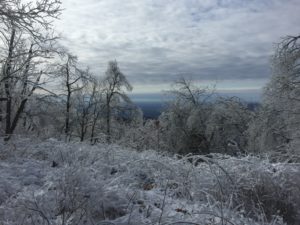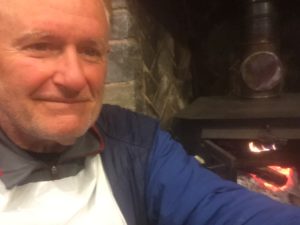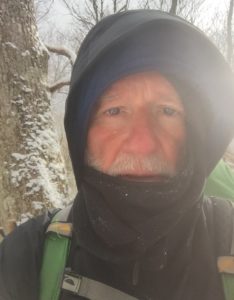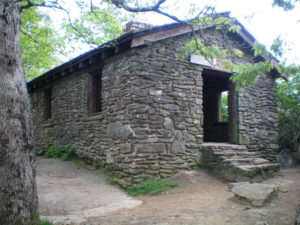It’s hard to appreciate how black total darkness is because we so rarely experience it. There’s always a little light somewhere, if only from the face of a digital clock. So I was surprised when my cap light died on Blood Mountain and I couldn’t see anything. It was as if I were standing in a closet at night with my eyes closed and the door shut — wearing a blindfold.
I dug into my pocket and pulled out a cigarette lighter. But it wouldn’t light. I discovered later that the flint was wet.
That’s when I told myself: You make one more mistake –if one more thing goes wrong –you’re not going to Maine. You’re not going home, either.
I had a spare cigarette lighter in my tool bag. Now if I could just find it in the dark and coax my fingers, which were freezing and not working all that well, to make fire. I fumbled through my pack and, somehow, I did find it. I shielded the lighter from the wind and got fire. With that light I was able to replace the batteries in my cap light. Now I was back in business. I put the cap light back in my mouth and, in a few minutes, I had my tent up and I was inside, in my sleeping bag, starting to get warm. Outside it was still sleeting.
Did I pray any that night when I was lost on Blood Mountain? Oh yes, without ceasing.

There was light coming through my tent when I woke up next morning. It was 6:40 a.m. Time to move. I had to get off that mountain.
Everything was frozen. I could not open or close zippers. My tent was frozen to the ground cover and the ground cover was frozen to the ground. I peeled them off. The joints of my tent frame were frozen. I huffed and puffed warm breath on each joint, warming them up enough to pull them apart.
Worst of all, I had left my wet mittens outside and they were frozen. I should have slept with them. The frozen mittens were a major problem. Unprotected in that kind of weather your fingers freeze in a few minutes and then they stop working.
I couldn’t just put my hands in my jacket pockets because I couldn’t hike on ice without using my poles. So I stuck my frozen mittens under my shirt, next to my stomach, to melt the ice enough to get them on.
My plan was to walk down the Freeman Trail until I found the A.T. or I found civilization. No more turning back. I jammed my frozen gear in my backpack, strapped it on, and headed down the mountain.
It was slow going on the ice but, two hours later, there it was, a beautiful white blaze. I had intersected the Appalachian Trail. In another 45 minutes, I could see the roof of Mountain Crossings hostel through the ice laden trees. What a beautiful sight! Warmth, food, safety.
NOTE: I got frostbite on two fingers, a thumb, and one of my ears but the sores healed in a few days. The feeling returned to my fingers in a month or two and over the past two years part of the feeling has returned to my toes.
Postscript:

I stayed at Mountain Crossings for two and a half days with seven other A.T. thru-hikers, waiting out a terrific winter storm and zero degree temperatures. I was glad to be indoors, but the hostel was not the toasty refuge I had imagined it would be.
It was cold inside the hostel.
How cold? So cold I wore a toboggan when I took a shower.
Nah, I made that up.
But how about this: the water in the dog’s bowl froze. No, the bowl wasn’t on the porch. The bowl was sitting on the “living room” floor of the hostel. And, no, I didn’t make that up.
Coming Monday: Take Her or Leave Her

